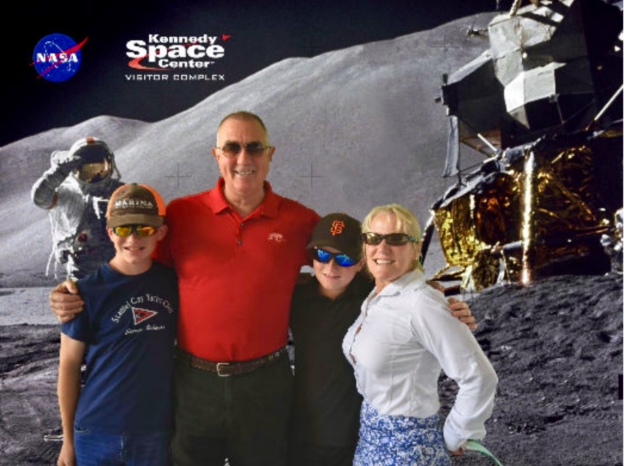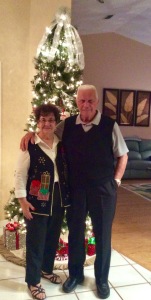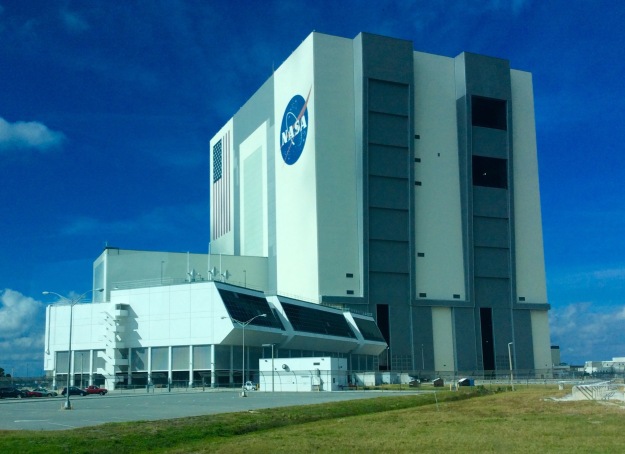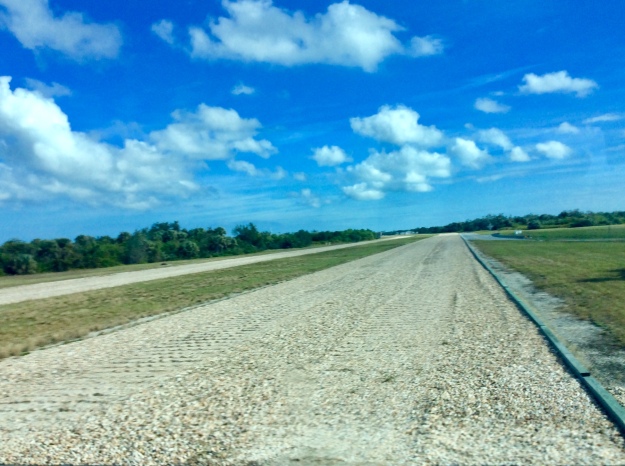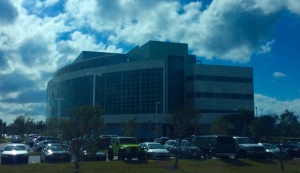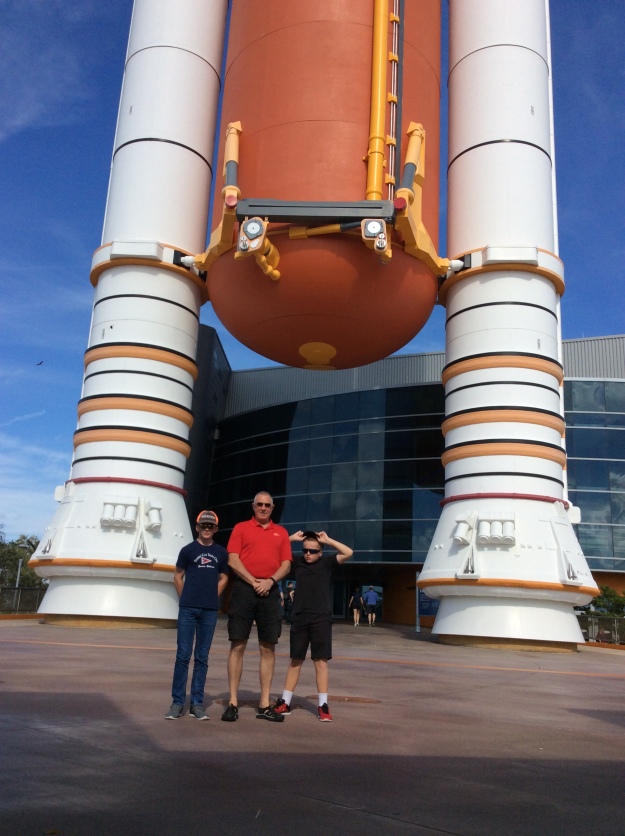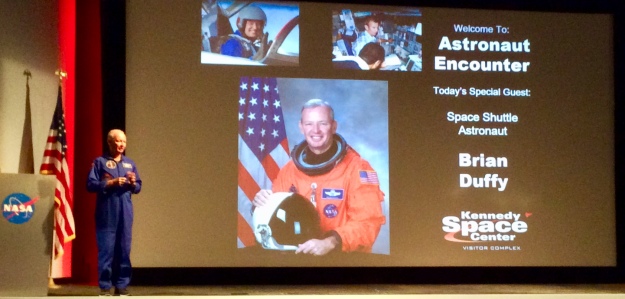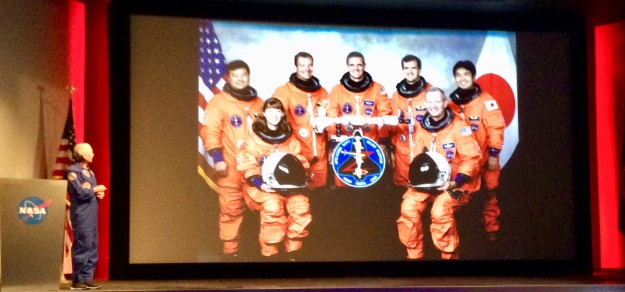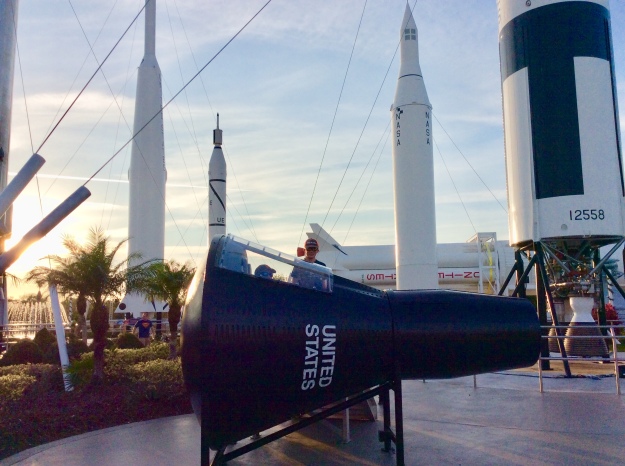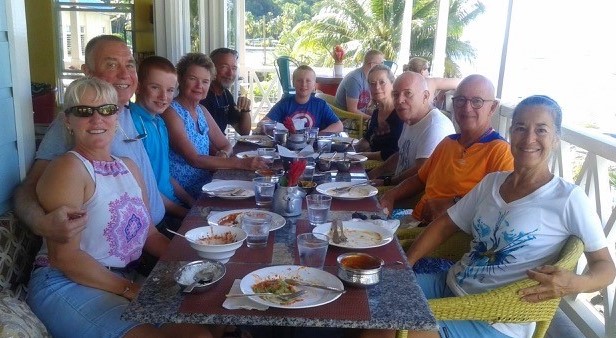Recently our family took a trip to Cape Canaveral, Florida to visit the Kennedy Space Center. On the last day visiting our grandparents, Ronan and I got the feeling everybody knew something that we did not. That was because they did. They told us that, “The plan for tomorrow has certainly changed; it will be a surprise.” Before the day was over we were told we were heading to the Kennedy Space Center, and we were all very excited!
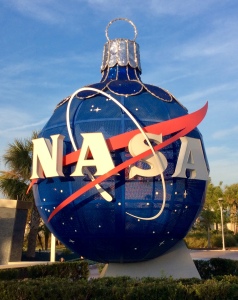
Welcome to NASA – Get ready to explore!
The next day we drove across the state to Cape Canaveral. We went to a hotel and waited until the next day to visit the Kennedy Space Center. After arriving the next day we walked through the rocket garden (very cool) and through the whole space center to where the bus tour originated. The 2.5 hour bus tour provides a great introduction and overview of the Kennedy Space Center.
Our bus driver was a very knowledgeable guide. He pointed out every alligator we saw until we got to the Vehicle Assembly Building. After pointing out each alligator, he would say, “5,999 to go, 5998 to go, 5997 to go,” and so on. First, we came upon the Vehicle Assembly Building (“VAB”). It was HUGE!
Our guide informed us that it is the largest (by volume) building in the world. He said the American flag on the side of the building was six stories tall.  NASA uses this building to assemble the space craft, in the past including the shuttle, the exterior fuel tank, and the solid rocket booster.
NASA uses this building to assemble the space craft, in the past including the shuttle, the exterior fuel tank, and the solid rocket booster.
Shortly after driving by the VAB we saw the massive crawler used for carrying different kinds of spacecraft to the launch pad. To transport the spacecraft from the VAB to the launch pad NASA opens up one side of the VAB and puts the spacecraft on the crawler.
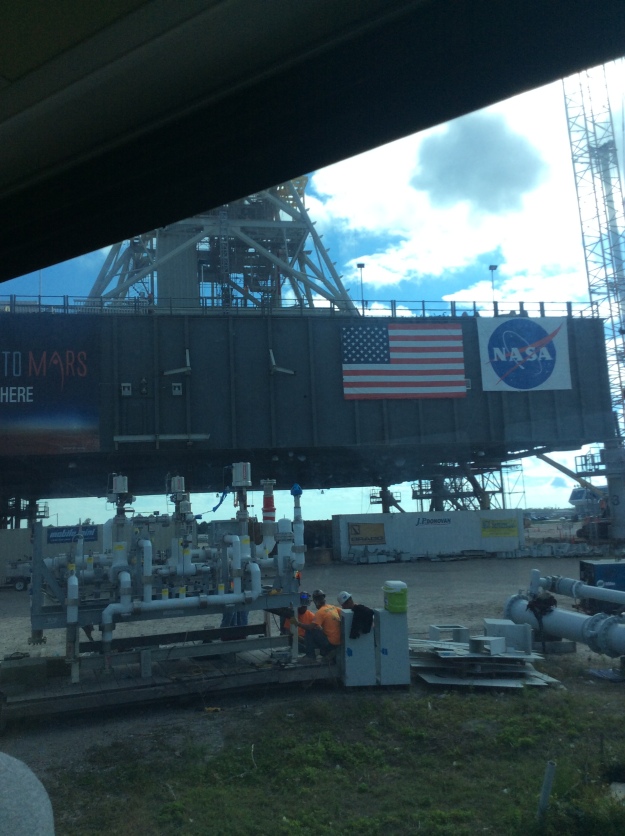
“The Crawler” (only captured part of it, but this massive piece of machinery transported the shuttle)
The crawler travels on the three mile crawlerway to the launch pad. An interesting fact the guide told us about the crawlerway was that it was made of Tennessee River rocks. NASA used Tennessee River rocks because they do not contain iron and therefore would not produce sparks. We also learned that the crawlers travel at a speed of approximately one mile per hour (hence its name “Crawler”). Next, we traveled the three miles out to the different launch pads.
There are a great deal of things that could go wrong during a launch and the spacecraft has the explosive capability of an atomic bomb. You do not have to be a rocket scientist to know (and want) to be far away from the launch pad when a launch occurs. That is why mission control and the VAB are a little over three miles away from the launch pad.
We were told about how going to space was a challenge that has been recently taken on by private industries in addition to NASA. A couple of these companies are Space X and Blue Origin. We passed Space X’s equivalent of the VAB. Their building was not nearly as tall but this is because they assemble their spacecraft horizontally. When bringing the spacecraft out to the launch pad they rotate it into a vertical position. Space X has their own launch pad.
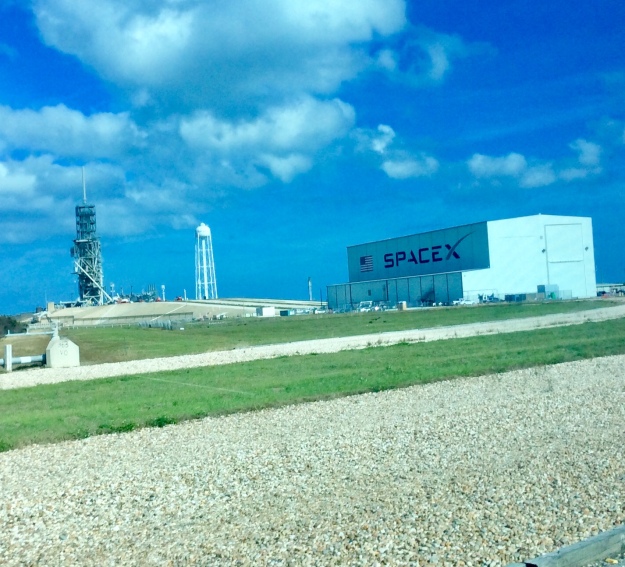
“Crawler Space Shuttle Route” passing in front of Elon Musk’s Space X’s launch pad
On the way back towards the space center we stopped in the Apollo/Saturn V Center. It houses The Apollo and Saturn V rockets as well as part of the first mission control.
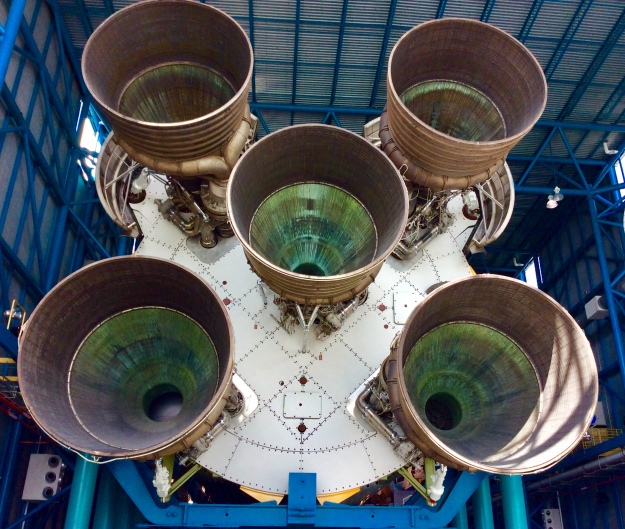
Saturn V, Cape Canaveral, FL 12-17
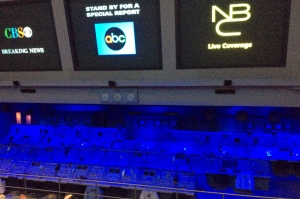
Mission Control
After a short movie we entered into a large room with part of the original mission control. While in mission control it was like being there during the first launch. The room was rigged to play the timer, the checklist, and even the people’s voices just as it was during the first launch. After that experience, we got a new guide that showed us the real Saturn V rocket. It was gigantic!! The rocket ran the length of the whole building and was divided into three parts.
When the bus tour got back to the Space Center we went into the Atlantis building.
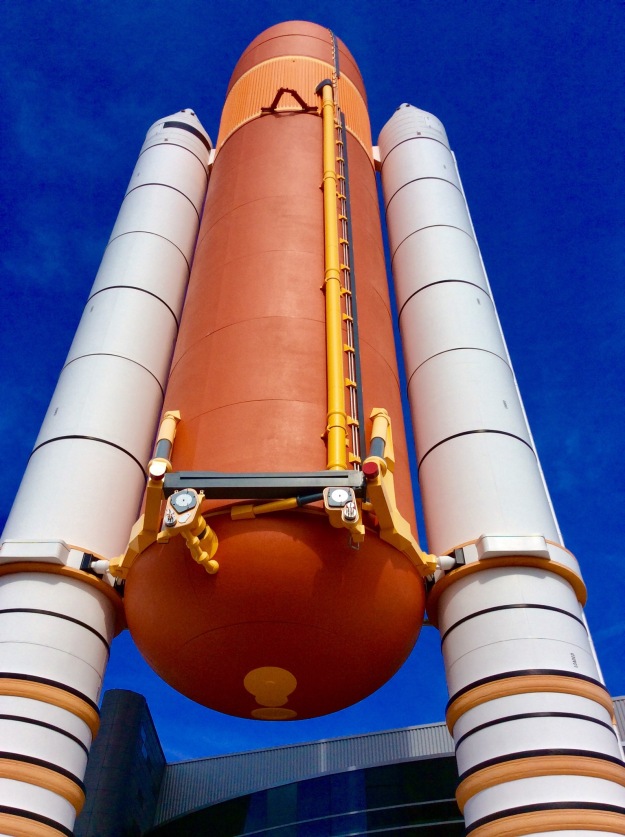
External Fuel Tank and Solid Rocket Boosters for Space Shuttle, Kennedy Space Center, Cape Canaveral, FL, 12-17
There were tons of cool presentations and the real Atlantis Space Shuttle. We could see the dents and marks on the shuttle where small meteorites hit it.

Space Shuttle Atlantis in its permanent museum home, Kennedy Space Center, Cape Canaveral, FL, 12-17
We then went into a realistic shuttle takeoff simulator and even tried a shuttle landing simulator. We did not leave until we all were able to successfully land the shuttle in the simulator. We spent a lot of time in the Atlantis building before going to the IMAX movie. We saw the movie “A Beautiful planet.” It was a great movie that gave us a different perspective of Earth. After that we took off back to the hotel.
Day two of our mission we got to the space center early. We started the day off with the astronaut encounter. NASA astronaut Brian Duffy gave us a personal presentation and shared his experiences in outer space.
His presentation, unlike most other things in the Space Center, was like a personal journal. He explained what life was like for him, and his fellow astronauts, from an astronaut’s prospective.
After the astronaut encounter we went to see the second IMAX movie, “Journey to Space.” The movie was about going to space past, present, and future. When the movie was over we went back through the Rocket Garden and the on to the Heroes and Legends exhibit.
After watching a short 3d movie, we walked through the U.S. Astronaut Hall of Fame. The astronaut Brian Duffy, whom we met earlier, was one of the most recent inductees being inducted just last year.
After going through the Astronaut Hall of Fame it was time for us to go. We all had fun being astronauts for the day (two) and overall the experience was out of this world! I hope everyone had a very merry Christmas and will have a happy New Year.

